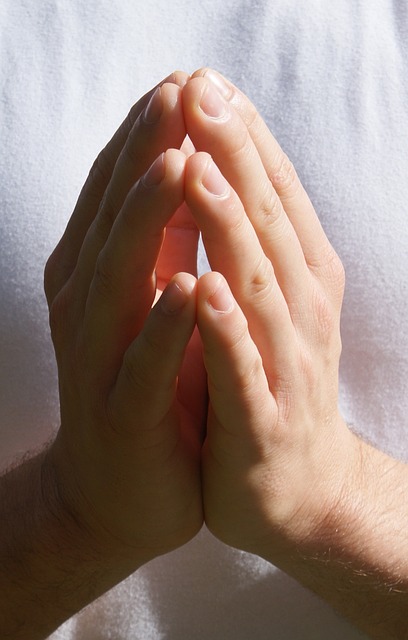In a previous post I explored ways to sustain an intimate relationship. But what does love mean? We use the word so loosely – referring to everything from a dessert to a location to an intimate friend. Mitra Manesh explores this question in her guided meditation podcast, Meaning of Love – one of the many weekly meditation podcasts from MARC, UCLA. Mitra is a mindfulness teacher with MARC, creator of the Inner Map app and provider of mindfulness teaching through her short videos on Vimeo©. She has worked extensively to bring mindfulness to the corporate world, combining Eastern and Western perspectives.
Guided meditation on the meaning of love
Mitra begins her guided meditation by suggesting that you first become grounded by using your hands as the anchor. She suggests that you can focus on the pressure of your hands on your lap, the touching of your fingers together or the up and down movement of your hands on your stomach as you breath in and out. Whatever hand anchor you choose, the idea is to gently bring your mind back to this anchor whenever your mind wanders.
Once you have become grounded, you can explore “love as connection”. Mitra’s guided meditation is based on the idea that the connection underpinning love occurs at four levels – the physical, intellectual, emotional and universal levels. The meditation follows a progression from a focus on the physical to universal connectedness and incorporates connection to self (experiencing self-love):
- Physical connection – here the initial focus is on a pleasant body sensation such as the warmth of your fingers touching, the softness of the palm of your hand or the firmness of your feet on the floor. Once you have experienced this pleasant bodily sensation, you can extend your focus to the recollection of the pleasantness of a physical connection to another person such as a hug or a kiss. When you have achieved awareness of physical connection and experienced pleasant recollections, you can gently move on.
- Intellectual connection – firstly focus on connecting to your own mind – what is going on in your head. Mitra suggests that you envisage your thoughts as clouds coming and going, merging and dissipating – blown by the winds of change. This is a pleasant change from other forms of meditation where you are discouraged from being distracted by your thoughts. Here the idea is to notice what is going on in the process of your thinking – how one idea leads to another, how ideas connect you to past experiences and how ideas flow through you endlessly. You can expand this intellectual focus to recollecting a recent experience where you felt a strong intellectual connection to a colleague, a family member or an intimate partner. You can then move on to the next level of connection.
- Emotional connection – this is the level we often associate with love, but genuine love operates at all levels. Here you first focus on a pleasant emotion that you may be experiencing at this moment – enjoying the contentment, pleasure or happiness that arises through this mindful awareness. If your current emotion is experienced as unpleasant, Mitra suggests that you look inside yourself to see what unfilled need is giving rise to this negative experience. Again, if you wish to extend your sense of emotional connection to another person you can recollect a time when you were with someone, a friend or partner, where you had a real sense of emotional connection – whether the experience was one of joy, peace, safety, comfort or other positive feeling.
- Universal or spiritual connection – this is not an aspect that Mitra dwells on in her guided meditation. However, we can focus on human connectedness and our connectedness to nature to gain a sense of the universality of our connection.
Tara Brach, in her brief talk on the meaning of love, discusses the “aliveness of connection” and the translation of this universal connection into compassionate action. To illustrate this connection to all living things, she tells the story of a prisoner who saved a pigeon from stoning by another prisoner by saying simply. “Don’t do that – that bird has my wings.” Tara argues that radical compassion has all the elements of love including caring, forgiving and appreciating. She illustrates the multiple meanings given to “love” by sharing stories of how 8 year old children described love. One child, for example, had this to say on the meaning of love:
When you tell someone something bad about yourself and you are frightened that they won’t love you anymore, but then you are surprised that they love you even more!
Reflection
Love has multiple levels and is expressed in many different ways. As we grow in mindfulness through meditation, reflection and compassionate action, we can learn to appreciate self-love and love for others that we experience at all levels – the physical, intellectual, emotional and universal levels. The essence of love is connection and mindfulness practices can help us to better understand and enhance these connections.
_____________________________________
Image by Annie Spratt from Pixabay
By Ron Passfield – Copyright (Creative Commons license, Attribution–Non Commercial–No Derivatives)
Disclosure: If you purchase a product through this site, I may earn a commission which will help to pay for the site, the associated Meetup group and the resources to support the blog.

